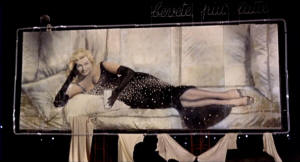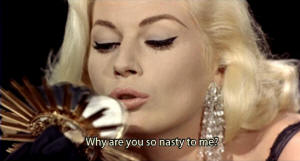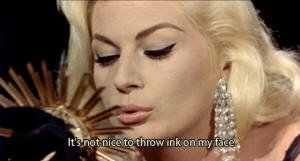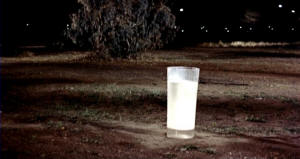|

"The 'pure substance' or the 'elixir'
... obtained from the entrails of
Mother Nature, is in alchemy nothing other than the gynergy so sought
after in Tantrism. Just like the Tantric, the alchemist thus draws a
distinction between the 'coarse' and the 'sublime' feminine. After the
destruction of the 'dark mother', the so-called nigredo, the second phase
follows, which goes by the name of albedo ('whitening'). The adept
understands this to mean the 'liberation' of the subtle feminine ('pure
substance') from the clutches of the coarse 'dragon' (prima materia).

The master has thus transformed the black
matter, which for him symbolizes the dark mother, following its burning or
cutting up in his laboratory into an ethereal 'girl' and then distilled
from this the 'pure Sophia', the incarnation of wisdom, the 'chaste moon
goddess', the 'white queen of heaven'. One text talks 'of the
transformation of the Babylonian whore into a virgin' (Evola, 1993, p.
207).

Why are
you so nasty to me?

It's not
nice to throw ink on my face.
Now this transmutation is not, as a contemporary observer would perhaps
imagine the process to be, a purely spiritual/mental procedure. In the
alchemist’s laboratory, some form of black starting substance is in fact
burned up, and a chemical, usually liquid substance really is extracted
from this material, which the adept captures in a pear-shaped flask at the
end of the experiment. The Indians refer to this liquid as rasa, their
European colleagues as the 'elixir'. Hence the name for Indian alchemy —
Rasayana.
Even though all the interpreters in the discussion of the alchemic 'virgin
image' (the subtle feminine) are of the unanimous opinion that this is a
matter of the spiritual and psychological source of inspiration for the
man, this nevertheless has a physical existence as a magical fluid. The
'white woman', the 'holy Sophia' is both an image of desire of the
masculine psyche and the visible elixir in a glass. (In connection with
the seed gnosis we shall show that this is also the case in Tantrism.)
This elixir has many names and is called among other things 'moon dew”'or
aqua sapientiae (water of wisdom) or 'white virgin milk'. The final
(chemical) extraction of the wonder milk is known as ablactatio (milking).
Even in such a concrete point there are parallels to Tantrism: In the
still to be described 'Vase initiation' of the Kalachakra Tantra, the
ritual vessels which are offered up to the vajra master in sacrifice,
represent the wisdom consorts (mudras). They are called 'the vase that
holds the white [the milk]' (Dhargyey, 1985, p.. Whatever ingredients this
'moon dew' may consist of, in both cultural circles, it is considered to
be the elixir of wisdom (prajna) and a liquid form of gynergy. It is as
strongly desired by every European adept as by every Tibetan tantric
master.

We can thus state that, in Tantrism, the relation between the real woman
(karma mudra) and the imaginary spirit woman (inana mudra) is the same as
that between the dark mother (prima materia) and the 'chaste moon goddess'
(the feminine life-elixir or gynergy) in European alchemy. Therefore, the
sacrifice of karma mudra (prima materia), drawn usually from the lower
classes, and her transformation into a Buddhist 'goddess' (inana mudra) is
an alchemic drama. Another variation upon the identical hermetic play
emerges in the victory of the vajra master over the dark horror dakini
(prima materia) and her slaughter, after which she (post mortem) enters
the tantric stage as a gentle, floating figure — as a nectar-giving 'sky
walker' ('the chaste moon goddess').
The
witch-like cemetery whore has transformed herself into a sweet granter of
wisdom.
--
"The Shadow of the Dalai Lama," by Victor and
Victoria Trimondi



|







